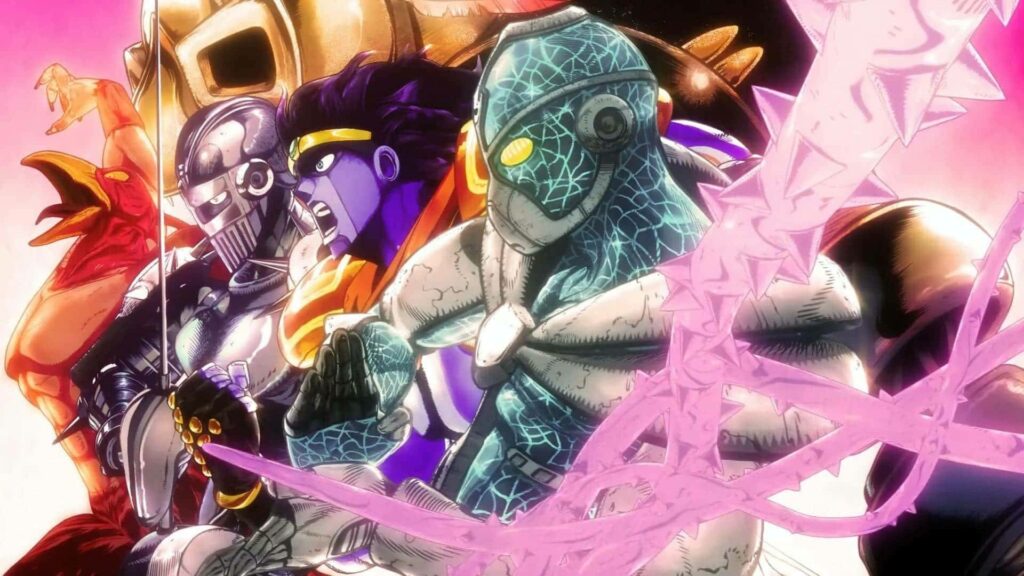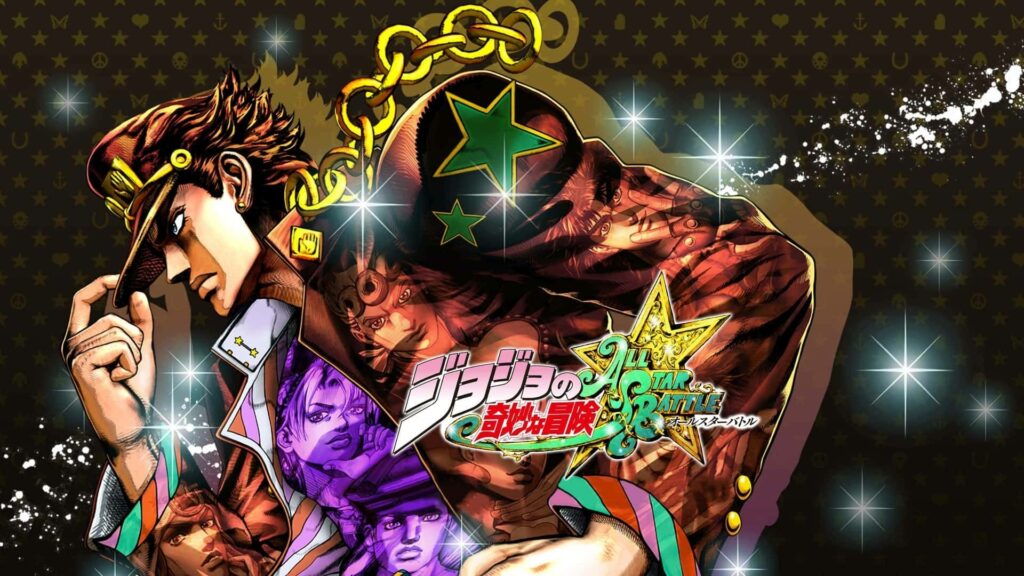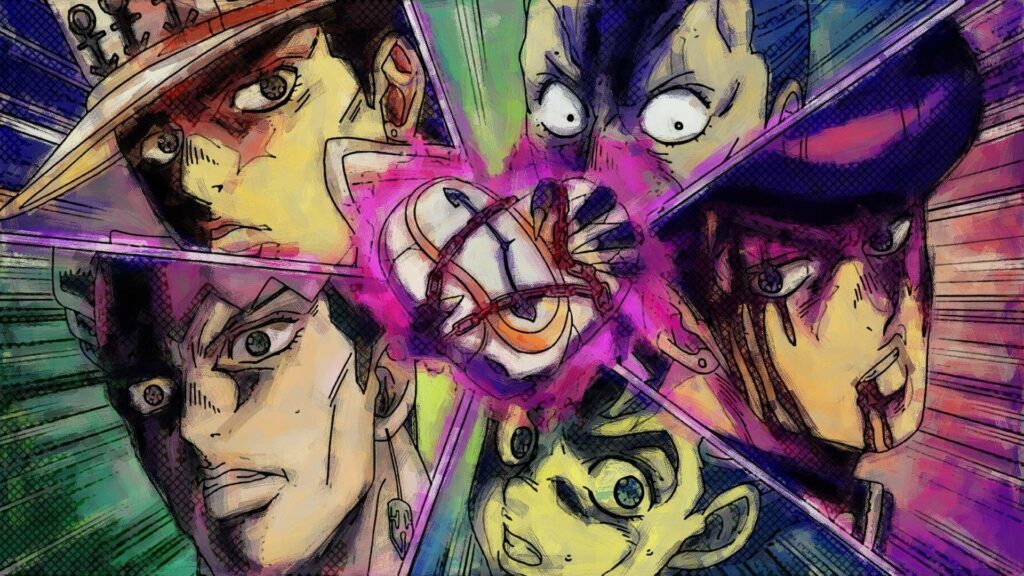Hirohiko Araki’s legendary series JoJo’s Bizarre Adventure (JoJo no Kimyō na Bōken) has maintained its presence in the manga world since 1987 and has established a distinctive place in anime and manga history with its unique art style, extraordinary characters, and creative storytelling. This iconic series has become a phenomenon shaping popular culture not just in Japan but worldwide. So what lies behind JoJo’s extraordinary influence?
Evolving Art Style: From Manga to Fashion
Perhaps the most striking feature of JoJo’s Bizarre Adventure is Araki’s constantly evolving art style. The series underwent a transformation from the muscular, Fist of the North Star-like characters of the ’80s to more slender, elongated, and stylized figures over time. This transformation became particularly noticeable from the 4th part, Diamond is Unbreakable, onward.
Araki’s style has been strongly influenced by classical Renaissance art, Art Nouveau, and high fashion. The characters’ exaggerated posing (which has entered popular culture as the “JoJo Pose”), anatomically impossible stances, and striking color palettes make the series visually immediately recognizable.
This unique aesthetic has also influenced the high fashion world. Collaborating with Gucci, Araki created a special manga for the brand’s 2013 Cruise collection. Additionally, his characters’ style has echoed in collections by fashion giants like Jean Paul Gaultier and Versace.

Stand System: A Creative Combat Mechanic
The Stand system, introduced in the 3rd part of JoJo, Stardust Crusaders, is one of the series’ most innovative elements. Stands, as spiritual reflections of their users, are entities with unique powers and appearances. This system allows for much more complex, strategic, and mental conflicts than simple physical fights.
Stand names are often taken from rock bands, albums, or songs (like Star Platinum, Killer Queen, King Crimson), reflecting Araki’s passion for music. This creative naming system has encouraged JoJo fans to explore classic rock and pop music, revitalizing many music lovers’ interest in these works.
The Stand system has influenced many subsequent anime and manga, serving as an inspiration for complex power systems and creative combat mechanics. Power systems in modern shonen series like the Nen system in Hunter x Hunter or the Quirk system in My Hero Academia bear traces of JoJo’s innovative approach.

JoJo References in Popular Culture
JoJo’s Bizarre Adventure has become a cult phenomenon referenced in countless internet memes, video games, and other media forms. Iconic phrases like “Za Warudo” (The World), “Ora Ora Ora,” and “Muda Muda Muda” have become part of internet culture.
The series’ absurd humor, exaggerated dialogues, and dramatic moments have provided perfect meme material. Scenes like the “To Be Continued” arrow meme, “Awaken My Masters,” and “Oh? You’re Approaching Me?” went viral on social media, making JoJo recognizable even among those who don’t watch anime.
The video game world has also been deeply influenced by JoJo. The hairstyle of Street Fighter’s Guile character was inspired by Polnareff. Many characters in the Guilty Gear series contain direct JoJo references. Even popular games like League of Legends contain hidden JoJo references.
JoJo Aesthetics in Fashion and Design
The bold, avant-garde costume designs of JoJo characters have created a significant impact in the fashion world. Especially Giorno Giovanna and his gang’s Italian high fashion-inspired outfits in the 5th part, Vento Aureo, have been greatly appreciated among fans.
The characters’ exaggerated accessories, bold color combinations, and unusual design choices have also become popular in the cosplay community. JoJo cosplays are among the most frequently seen and appreciated works at anime conventions.
Additionally, high-quality collection products like the Super Action Statue figure series bring JoJo characters’ unique poses and designs to life in three dimensions, creating high demand among collectors.

Cinematic Narration and Composition
Araki’s composition and framing techniques in manga panels have a cinematic quality. Dramatic angles, close-ups, and dynamic panel arrangements give manga pages almost a film frame aesthetic.
The anime adaptation by David Production took this cinematic approach even further. Especially the sudden changes in color palette, freeze-frame moments, and stylized effects gave the anime a unique visual identity.
This cinematic approach has influenced many subsequent anime and manga artists. Dynamic fight scenes and visual effects in modern series like Demon Slayer bear traces of JoJo’s innovative narrative techniques.
Multi-Generational Storytelling
One of JoJo’s most notable features is its segmented structure following different generations of the Joestar family. Each part takes a different JoJo (Jonathan, Joseph, Jotaro, Josuke, Giorno, Jolyne, Johnny, and Josuke – JoJolion) as the main character in a different time period.
This structure gives Araki the freedom to explore different historical periods, themes, and styles while allowing him to create a coherent narrative around a family legacy. This multi-generational narrative approach was used by JoJo long before popular Western series like Game of Thrones.
This innovative story structure has influenced many subsequent series and provided a model for how long-running stories can remain fresh and engaging.

Cross-Cultural Interaction and Global Impact
JoJo’s Bizarre Adventure is one of the rare manga series that boldly explores cultures and locations outside Japan. Characters travel to different countries like England, Egypt, Italy, America, and elements of these cultures are incorporated into the story.
This cross-cultural approach has made JoJo a series that appeals to a global audience. Western fans appreciate seeing their own cultures represented in manga, while Japanese readers find a window into different cultures.
JoJo’s global approach has contributed to the internationalization of the anime and manga industry and set an example for cross-cultural storytelling.
JoJo’s Bizarre Adventure has evolved from just a manga series to become a true cultural phenomenon throughout its 35+ year history. Araki’s bold artistic choices, innovative storytelling, and unique characters have made the series only more relevant and influential over time.
Today JoJo references appear everywhere from music to fashion, video games to internet culture. The series’ influences are so deep that many people may be consuming media influenced by JoJo without realizing it.
What do you think? What aspect of JoJo’s art style do you find most impressive? What’s your favorite Stand or JoJo part? Have you noticed any JoJo references in popular culture?





